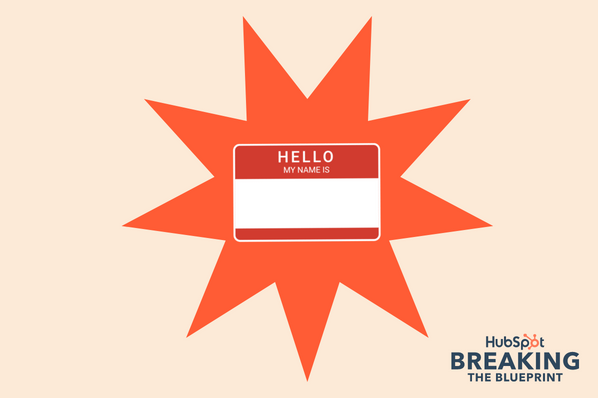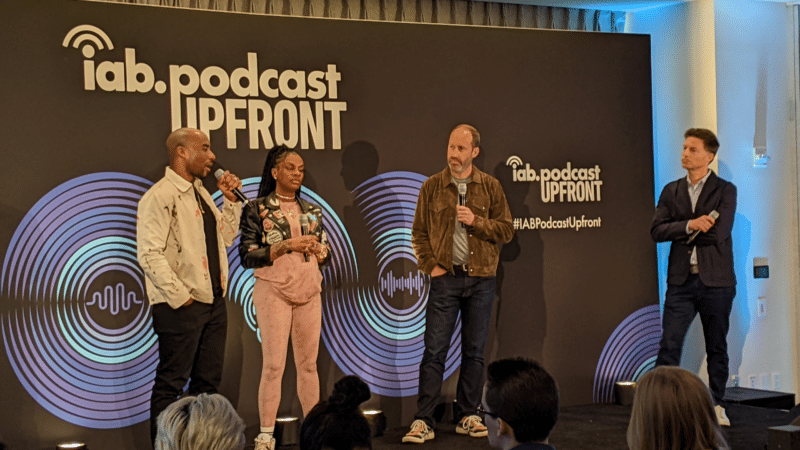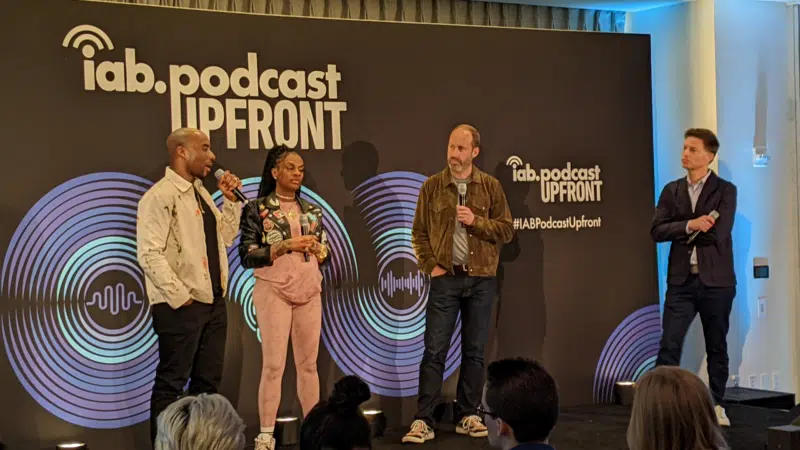MARKETING
5 Great Content Marketing Articles That Deserve Another Look

If you publish great content and hardly anyone reads it, is it actually great content?
That’s a question for the ages – or maybe the comments section.
Every content marketer plans, crafts, reviews, and publishes articles with the best intentions. We all want to publish the most helpful content, sharp insights, and genuinely leading thoughts.
Sometimes, articles you think will be great don’t hit the mark for audiences. (I’ve written about steps to take when your content “fails.”)
But what about the content assets in the middle? They are not top performers or true duds, but they didn’t get quite all the love you think they deserve.
Looking at CMI’s 2022 content, I found a set of articles that deserve another look. Here are a few that feel particularly relevant to this moment.
Author: Jonathan Crossfield
Reading time: 10 minutes
Why read (or reread) this now: Competition for audience attention will increase in 2023, and it will be harder to stand out. Jonathan shares his secret for finding a unique angle – even on topics so widely covered that it feels like an “SEO-to-the-death” competition. (It doesn’t hurt that Jonathan’s storytelling style kept me laughing all the way.)
Tempting tidbit:
They make this week’s topic about the common problems users experience with doodads because understanding the limitations of doodads is often the first step to deciding to upgrade to a full-featured doohickey. The team checks the keyword list, jots down the first few ideas that come to mind, and starts writing the briefs.
However, at this stage, the content ideas are wholly undeveloped.
Anyway, the writer is briefed with a title and a bunch of keywords, so they develop a straightforward structure and smash out 800 words. Time to tell the marketing assistant to look up stock images of attractive women smiling or looking thoughtfully at laptops while sitting in the most impractical and/or uncomfortable places possible. (Does anyone really write their blog posts on the stairs?)
Read the rest and learn to apply Jonathan’s originality formula.
Myth: Creative inspiration strikes out of nowhere. Reality: It takes a series of fortunate events – and a lot of brain strain, says @Kimota via @CMIContent Click To Tweet
Reading time: 7 minutes
Author: Ann Gynn
Why read (or reread) this now: Summer isn’t the only time your content program slows down while everyone’s on vacation. If you’re one of the only people in the office this week or next, revisit Ann’s suggestions for using the lull to work on things you know will pay off but rarely have time to focus on.
Tempting tidbit:
You probably write alt text for your images, use Pascal case for your hashtags (#SummerLull, not #summerlull), and provide captions for your videos. (If not, start there.)
But have you ever experienced your content as people who are blind, deaf, or have vision or hearing impairment might? Take the time to do it now.
Download text-to-speech software and feed your most popular written content assets into it. How is the listening experience? Are there commonly used acronyms, terms, or phrases that don’t translate well to the ear? Are there other glitches you could remedy by editing the content or avoiding them in the future?
Download speech-to-text software or read – word for word the assistance you already provide (i.e., video captions and transcripts). Are the spoken words easily translatable into text? Do the terms you use have multiple spellings that could cause confusion? How is background sound translated or disclosed in the text?
Review a few pieces of content in each format, then note and share potential trouble spots with your content creators. That way, they can avoid them in the future.
Read the article for more tips on how to have a productive slow season.
Have you experienced your #Content the way people with vision or hearing impairments might? Use seasonal downtime to try it, says @AnnGynn via @CMIContent. Click To Tweet
Reading time: 7 minutes
Author: Lakshmi Padmanaban
Why read (or reread) this now: End-of-year analyses tend to uncover a few mysteries. If an underperforming landing page is one of them, you might want to investigate. In her first article for CMI, Lakshmi explains the curious phenomenon of stagnant conversions – even when traffic increases – and what to do about it.
Tempting tidbit:
If much of your traffic comes from search engine results, your page’s content, especially its keywords and key phrases, could be the top suspect.
Google and other search engines like categorize and rank your content differently than how you intended. Let me break it down with this example:
Let’s assume you create a landing page designed to convert visitors interested in your air conditioner maintenance services. The target keyword is “air conditioner maintenance.” You include product names and key phrases mentioning buying options.
When the search engines crawl the page, they interpret it as a page selling air conditioners. People who click on the ranking result intend to buy air conditioners. Instead, they find content about how to maintain them after they buy.
Now you can see why visitors who land on the page don’t convert.
Read the rest of the article for other reasons more traffic didn’t lead to more conversions.
If search engines misinterpret your #Content, search-directed visitors likely won’t convert, says @Lakshmi_writes via @CMIContent. Click To Tweet
Reading time: 6 minutes
Author: Dennis Shiao
Why read (or reread) this now: Many content teams feel stretched to the limit, but economic uncertainty may put a big chill on hiring in 2023. Even if your team is adequately staffed, a standby freelance network can help during employee turnover, illness, or other unexpected events. As a marketing agency owner (and former accidental freelancer), Dennis hit on an easy way to develop and test his freelance network– and explains how you can, too.
Tempting tidbit:
I didn’t want to ask people for their writing samples or lowball them on a “let’s get to know each other” project. Even though I didn’t know them, I took a leap of faith and hired them for a paid gig.
I needed to decide what they would write and thought of two opportunities at my disposal – my agency’s newly launched blog and the Bay Area Content Marketing Meetup I help organize.
I gave a paid assignment to every writer who contacted me on Twitter: Craft a summary of a presentation chosen from the meetup’s playlist. Based on the length and subject of the recording, I gave a target word count, typically in the range of 800 to 1,200 words.
… The full-length article appeared on my agency blog. (If writers requested, I added a link to their websites or LinkedIn profiles.)
This first paid assignment was essential to helping me build a network of outsourced writing talent.
Read the rest of the article to learn Dennis’ method for building a freelance network.
Don’t assess a #freelance writer as average or excellent. Get specific enough to know what type of assignments they’ll excel at, says @dshiao via @CMIContent. Click To Tweet
Reading time: 7 minutes
Author: Robert Rose
Why read (or reread) this now: Twitter’s acceptance of Elon Musk’s takeover bid prompted Robert to reflect on this content marketing advice: Don’t build your home on rented land. With high-profile people loudly quitting the platform (and the wait-and-see or quiet exit of many others), this column seems prescient.
Tempting tidbit:
Renting isn’t a bad thing. Finding your audience on rented platforms is critical for content and marketing strategy. But think of these platforms as rivers, not lakes. Use them to flow users to your own home (a website, resource center, email newsletter, etc.).
Think about how to encourage visitors on a rented platform to visit your home. Remember, a social media platform’s goal is to get you to help build its audience. Your goal should be to use a social media platform’s audience to help build yours.
You can (and should) build on rented land, as long as you only build what you’re willing to lose or can easily transfer, says @Robert_Rose via @CMIContent. Click To Tweet
Read Robert’s entire column to understand when and how to use rented platforms (like social media) in a way that won’t jeopardize your content strategy foundation.
Take another look at the quiet ones
I hope these articles sparked (or renewed) your interest. Now it’s your turn to reflect on your year in content.
When you do your review, which content stands out? Most people investigate the best and worst performers. Figuring out the why behind their performance can help you repeat the success or avoid future duds.
What about your serviceable performers? How do you resurface those to an audience that might have missed them the first time around?
Let me know in the comments.
Cover image by Joseph Kalinowski/Content Marketing Institute
!function(f,b,e,v,n,t,s)
{if(f.fbq)return;n=f.fbq=function(){n.callMethod?
n.callMethod.apply(n,arguments):n.queue.push(arguments)};
if(!f._fbq)f._fbq=n;n.push=n;n.loaded=!0;n.version=’2.0′;
n.queue=[];t=b.createElement(e);t.async=!0;
t.src=v;s=b.getElementsByTagName(e)[0];
s.parentNode.insertBefore(t,s)}(window, document,’script’,
‘https://connect.facebook.net/en_US/fbevents.js’);
fbq(‘init’, ‘1432232210459613’);
fbq(‘track’, ‘PageView’);
MARKETING
18 Events and Conferences for Black Entrepreneurs in 2024

Welcome to Breaking the Blueprint — a blog series that dives into the unique business challenges and opportunities of underrepresented business owners and entrepreneurs. Learn how they’ve grown or scaled their businesses, explored entrepreneurial ventures within their companies, or created side hustles, and how their stories can inspire and inform your own success.
It can feel isolating if you’re the only one in the room who looks like you.
MARKETING
IAB Podcast Upfront highlights rebounding audiences and increased innovation


Podcasts are bouncing back from last year’s slowdown with digital audio publishers, tech partners and brands innovating to build deep relationships with listeners.
At the IAB Podcast Upfront in New York this week, hit shows and successful brand placements were lauded. In addition to the excitement generated by stars like Jon Stewart and Charlamagne tha God, the numbers gauging the industry also showed promise.
U.S. podcast revenue is expected to grow 12% to reach $2 billion — up from 5% growth last year — according to a new IAB/PwC study. Podcasts are projected to reach $2.6 billion by 2026.
The growth is fueled by engaging content and the ability to measure its impact. Adtech is stepping in to measure, prove return on spend and manage brand safety in gripping, sometimes contentious, environments.
“As audio continues to evolve and gain traction, you can expect to hear new innovations around data, measurement, attribution and, crucially, about the ability to assess podcasting’s contribution to KPIs in comparison to other channels in the media mix,” said IAB CEO David Cohen, in his opening remarks.
Comedy and sports leading the way
Podcasting’s slowed growth in 2023 was indicative of lower ad budgets overall as advertisers braced for economic headwinds, according to Matt Shapo, director, Media Center for IAB, in his keynote. The drought is largely over. Data from media analytics firm Guideline found podcast gross media spend up 21.7% in Q1 2024 over Q1 2023. Monthly U.S. podcast listeners now number 135 million, averaging 8.3 podcast episodes per week, according to Edison Research.
Comedy overtook sports and news to become the top podcast category, according to the new IAB report, “U.S. Podcast Advertising Revenue Study: 2023 Revenue & 2024-2026 Growth Projects.” Comedy podcasts gained nearly 300 new advertisers in Q4 2023.
Sports defended second place among popular genres in the report. Announcements from the stage largely followed these preferences.
Jon Stewart, who recently returned to “The Daily Show” to host Mondays, announced a new podcast, “The Weekly Show with Jon Stewart,” via video message at the Upfront. The podcast will start next month and is part of Paramount Audio’s roster, which has a strong sports lineup thanks to its association with CBS Sports.
Reaching underserved groups and tastes
IHeartMedia toasted its partnership with radio and TV host Charlamagne tha God. Charlamagne’s The Black Effect is the largest podcast network in the U.S. for and by black creators. Comedian Jess Hilarious spoke about becoming the newest co-host of the long-running “The Breakfast Club” earlier this year, and doing it while pregnant.
The company also announced a new partnership with Hello Sunshine, a media company founded by Oscar-winner Reese Witherspoon. One resulting podcast, “The Bright Side,” is hosted by journalists Danielle Robay and Simone Boyce. The inspiration for the show was to tell positive stories as a counterweight to negativity in the culture.
With such a large population listening to podcasts, advertisers can now benefit from reaching specific groups catered to by fine-tuned creators and topics. As the top U.S. audio network, iHeartMedia touted its reach of 276 million broadcast listeners.
Connecting advertisers with the right audience
Through its acquisition of technology, including audio adtech company Triton Digital in 2021, as well as data partnerships, iHeartMedia claims a targetable audience of 34 million podcast listeners through its podcast network, and a broader audio audience of 226 million for advertisers, using first- and third-party data.
“A more diverse audience is tuning in, creating more opportunities for more genres to reach consumers — from true crime to business to history to science and culture, there is content for everyone,” Cohen said.
The IAB study found that the top individual advertiser categories in 2023 were Arts, Entertainment and Media (14%), Financial Services (13%), CPG (12%) and Retail (11%). The largest segment of advertisers was Other (27%), which means many podcast advertisers have distinct products and services and are looking to connect with similarly personalized content.
Acast, the top global podcast network, founded in Stockholm a decade ago, boasts 125,000 shows and 400 million monthly listeners. The company acquired podcast database Podchaser in 2022 to gain insights on 4.5 million podcasts (at the time) with over 1.7 billion data points.
Measurement and brand safety
Technology is catching up to the sheer volume of content in the digital audio space. Measurement company Adelaide developed its standard unit of attention, the AU, to predict how effective ad placements will be in an “apples to apples” way across channels. This method is used by The Coca-Cola Company, NBA and AB InBev, among other big advertisers.
In a study with National Public Media, which includes NPR radio and popular podcasts like the “Tiny Desk” concert series, Adelaide found that NPR, on average, scored 10% higher than Adelaide’s Podcast AU Benchmarks, correlating to full-funnel outcomes. NPR listeners weren’t just clicking through to advertisers’ sites, they were considering making a purchase.
Advertisers can also get deep insights on ad effectiveness through Wondery’s premium podcasts — the company was acquired by Amazon in 2020. Ads on its podcasts can now be managed through the Amazon DSP, and measurement of purchases resulting from ads will soon be available.
The podcast landscape is growing rapidly, and advertisers are understandably concerned about involving their brands with potentially controversial content. AI company Seekr develops large language models (LLMs) to analyze online content, including the context around what’s being said on a podcast. It offers a civility rating that determines if a podcast mentioning “shootings,” for instance, is speaking responsibly and civilly about the topic. In doing so, Seekr adds a layer of confidence for advertisers who would otherwise pass over an opportunity to reach an engaged audience on a topic that means a lot to them. Seekr recently partnered with ad agency Oxford Road to bring more confidence to clients.
“When we move beyond the top 100 podcasts, it becomes infinitely more challenging for these long tails of podcasts to be discovered and monetized,” said Pat LaCroix, EVP, strategic partnerships at Seekr. “Media has a trust problem. We’re living in a time of content fragmentation, political polarization and misinformation. This is all leading to a complex and challenging environment for brands to navigate, especially in a channel where brand safety tools have been in the infancy stage.”
Dig deeper: 10 top marketing podcasts for 2024
MARKETING
Foundations of Agency Success: Simplifying Operations for Growth


Why do we read books like Traction, Scaling Up, and the E-Myth and still struggle with implementing systems, defining processes, and training people in our agency?
Those are incredibly comprehensive methodologies. And yet digital agencies still suffer from feast or famine months, inconsistent results and timelines on projects, quality control, revisions, and much more. It’s not because they aren’t excellent at what they do. I
t’s not because there isn’t value in their service. It’s often because they haven’t defined the three most important elements of delivery: the how, the when, and the why.
Complicating our operations early on can lead to a ton of failure in implementing them. Business owners overcomplicate their own processes, hesitate to write things down, and then there’s a ton of operational drag in the company.
Couple that with split attention and paper-thin resources and you have yourself an agency that spends most of its time putting out fires, reacting to problems with clients, and generally building a culture of “the Founder/Creative Director/Leader will fix it” mentality.
Before we chat through how truly simple this can all be, let’s first go back to the beginning.
When we start our companies, we’re told to hustle. And hustle hard. We’re coached that it takes a ton of effort to create momentum, close deals, hire people, and manage projects. And that is all true. There is a ton of work that goes into getting a business up and running.


The challenge is that we all adopt this habit of burning the candle at both ends and the middle all for the sake of growing the business. And we bring that habit into the next stage of growth when our business needs… you guessed it… exactly the opposite.
In Mike Michalowitz’s book, Profit First he opens by insisting the reader understand and accept a fundamental truth: our business is a cash-eating monster. The truth is, our business is also a time-eating monster. And it’s only when we realize that as long as we keep feeding it our time and our resources, it’ll gobble everything up leaving you with nothing in your pocket and a ton of confusion around why you can’t grow.
Truth is, financial problems are easy compared to operational problems. Money is everywhere. You can go get a loan or go create more revenue by providing value easily. What’s harder is taking that money and creating systems that produce profitably. Next level is taking that money, creating profit and time freedom.
In my bestselling book, The Sabbatical Method, I teach owners how to fundamentally peel back the time they spend in their company, doing everything, and how it can save owners a lot of money, time, and headaches by professionalizing their operations.
The tough part about being a digital agency owner is that you likely started your business because you were great at something. Building websites, creating Search Engine Optimization strategies, or running paid media campaigns. And then you ended up running a company. Those are two very different things.


How to Get Out of Your Own Way and Create Some Simple Structure for Your Agency…
- Start Working Less
I know this sounds really brash and counterintuitive, but I’ve seen it work wonders for clients and colleagues alike. I often say you can’t see the label from inside the bottle and I’ve found no truer statement when it comes to things like planning, vision, direction, and operations creation.
Owners who stay in the weeds of their business while trying to build the structure are like hunters in the jungle hacking through the brush with a machete, getting nowhere with really sore arms. Instead, define your work day, create those boundaries of involvement, stop working weekends, nights and jumping over people’s heads to solve problems.
It’ll help you get another vantage point on your company and your team can build some autonomy in the meantime.
- Master the Art of Knowledge Transfer
There are two ways to impart knowledge on others: apprenticeship and writing something down. Apprenticeship began as a lifelong relationship and often knowledge was only retained by ONE person who would carry on your method.
Writing things down used to be limited (before the printing press) to whoever held the pages.
We’re fortunate that today, we have many ways of imparting knowledge to our team. And creating this habit early on can save a business from being dependent on any one person who has a bunch of “how” and “when” up in their noggin.
While you’re taking some time to get out of the day-to-day, start writing things down and recording your screen (use a tool like loom.com) while you’re answering questions.


Deposit those teachings into a company knowledge base, a central location for company resources. Some of the most scaleable and sellable companies I’ve ever worked with had this habit down pat.
- Define Your Processes
Lean in. No fancy tool or software is going to save your company. Every team I’ve ever worked with who came to me with a half-built project management tool suffered immensely from not first defining their process. This isn’t easy to do, but it can be simple.
The thing that hangs up most teams to dry is simply making decisions. If you can decide how you do something, when you do it and why it’s happening that way, you’ve already won. I know exactly what you’re thinking: our process changes all the time, per client, per engagement, etc. That’s fine.
Small businesses should be finding better, more efficient ways to do things all the time. Developing your processes and creating a maintenance effort to keep them accurate and updated is going to be a liferaft in choppy seas. You’ll be able to cling to it when the agency gets busy.
“I’m so busy, how can I possibly work less and make time for this?”


You can’t afford not to do this work. Burning the candle at both ends and the middle will catch up eventually and in some form or another. Whether it’s burnout, clients churning out of the company, a team member leaving, some huge, unexpected tax bill.
I’ve heard all the stories and they all suck. It’s easier than ever to start a business and it’s harder than ever to keep one. This work might not be sexy, but it gives us the freedom we craved when we began our companies.
Start small and simple and watch your company become more predictable and your team more efficient.
-

 PPC6 days ago
PPC6 days agoHow the TikTok Algorithm Works in 2024 (+9 Ways to Go Viral)
-

 SEO7 days ago
SEO7 days agoBlog Post Checklist: Check All Prior to Hitting “Publish”
-

 SEO5 days ago
SEO5 days agoHow to Use Keywords for SEO: The Complete Beginner’s Guide
-

 MARKETING6 days ago
MARKETING6 days agoHow To Protect Your People and Brand
-

 SEARCHENGINES7 days ago
SEARCHENGINES7 days agoGoogle Started Enforcing The Site Reputation Abuse Policy
-

 PPC7 days ago
PPC7 days agoHow to Craft Compelling Google Ads for eCommerce
-

 PPC6 days ago
PPC6 days agoHow to Brainstorm Business Ideas: 9 Fool-Proof Approaches
-

 MARKETING6 days ago
MARKETING6 days agoElevating Women in SEO for a More Inclusive Industry

















You must be logged in to post a comment Login